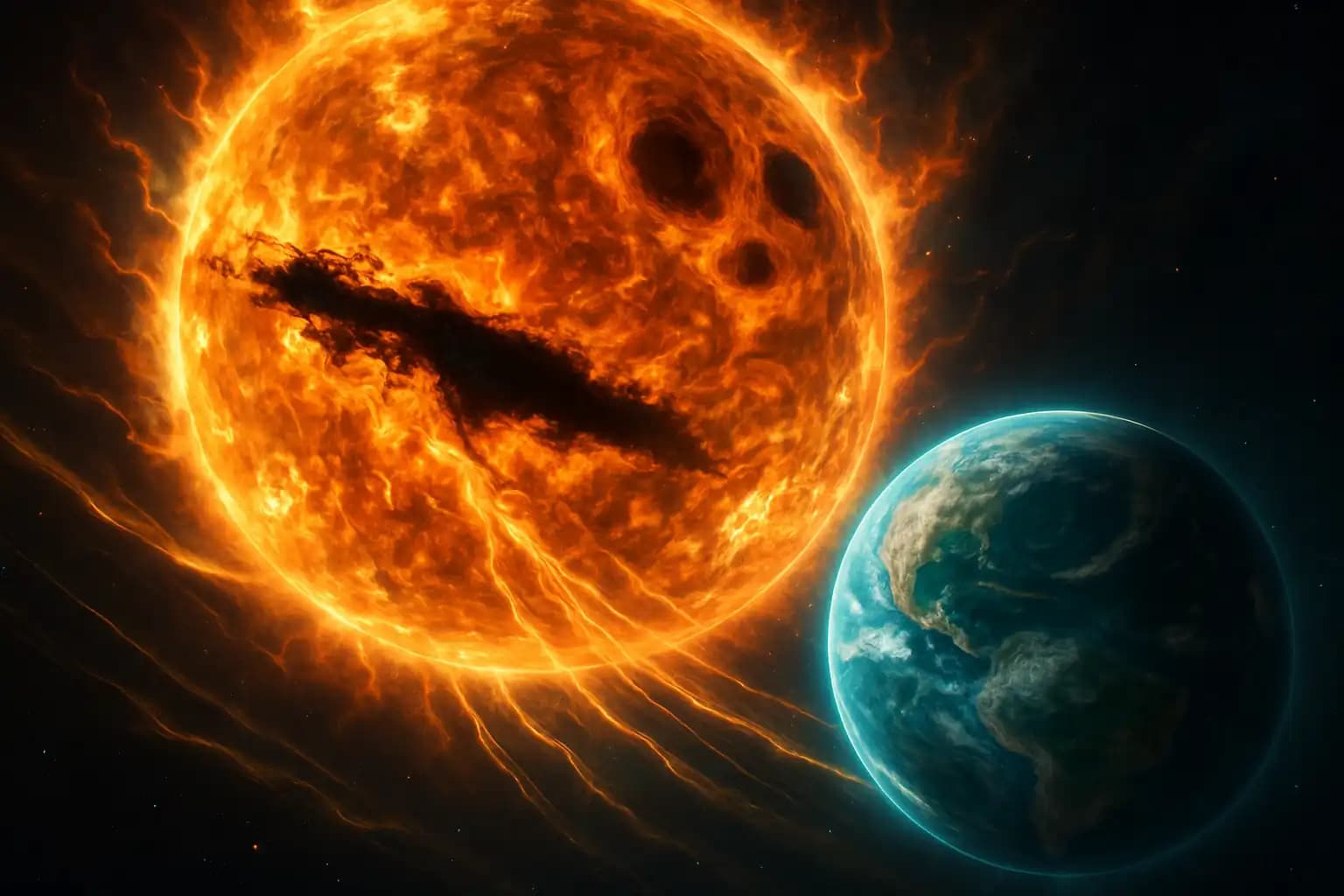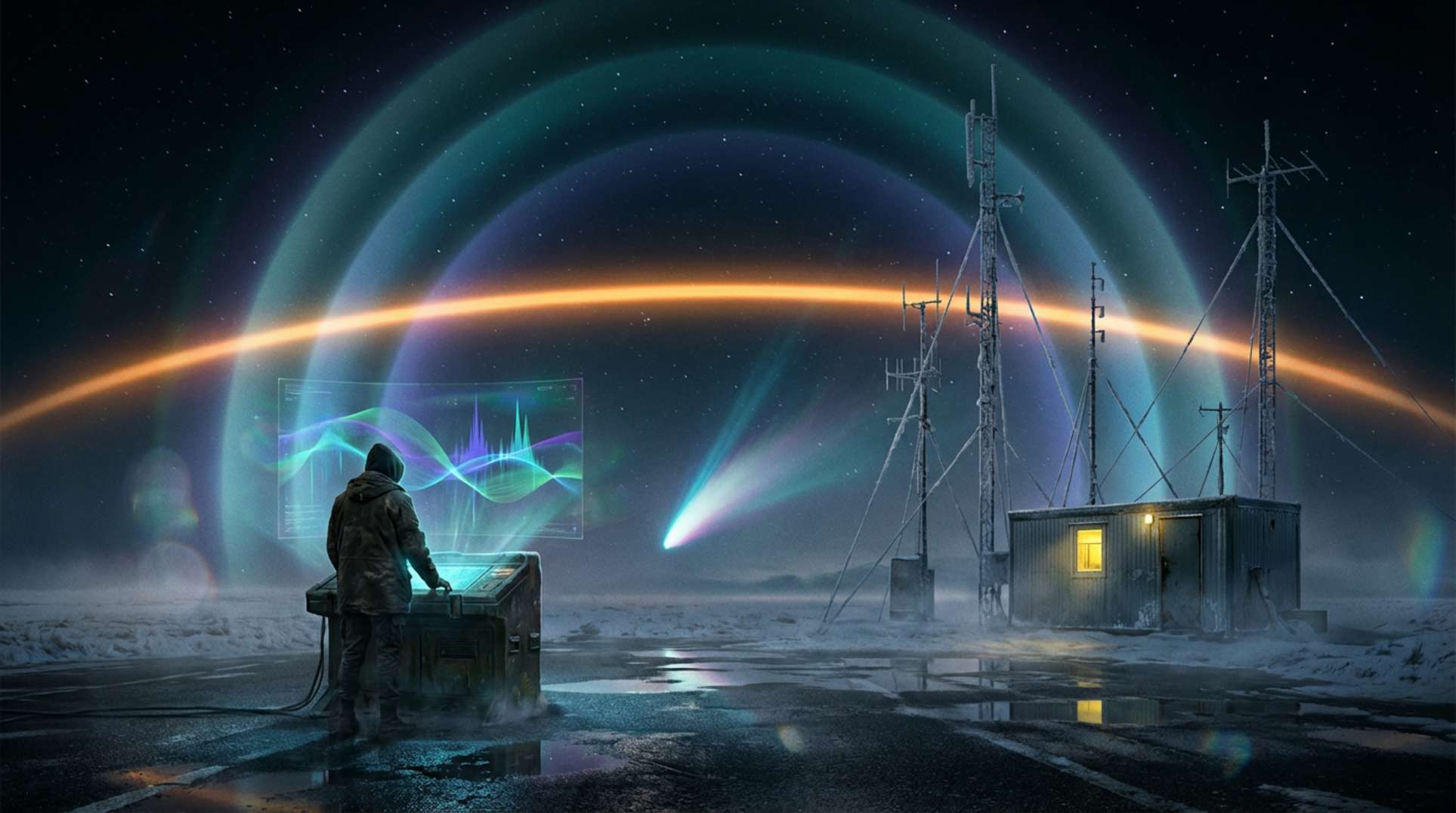This week, a dark scar has sliced across the Sun—a coronal hole, as potent as it sounds. Solar physicists track this gash along the solar equator. Streams of high-speed plasma are already hurtling toward Earth. According to EarthSky’s solar activity updates, minor to moderate geomagnetic storms are expected as early as May 28-29. The chance of sudden auroras and magnetic disruptions is rising sharply. But the solar activity isn’t over: two enormous, hyperactive sunspot regions lie behind this wind storm, including the infamous region 4100. It bristles with energy and flings coronal mass ejections—though, for now, those plasma blasts head away from our blue planet.
Space weather demands our full attention. The solar wind’s magnetic polarity hits negative, and powerful sunspots threaten to erupt. Earth braces for a cocktail of space weather hazards, both awe-inspiring and unnerving. If you’re wondering how sun scars, magnetic fields, and planetary alignments disrupt satellites and our power grid—welcome to heliophysics in 2025.
Coronal Holes and the Science of Solar Wind
What exactly is this “scar”? According to Wikipedia’s explanation of coronal holes, these are dark, cooler regions on the solar corona where magnetic field lines open into space. This openness allows solar wind to escape at blistering speeds—up to 800 km/s. When Earth crosses one of these solar gusts, our magnetosphere can be severely buffeted, often leading to geomagnetic storms and vivid auroras at high latitudes. As expert analyses remind us, storms driven by these coronal holes—notably the more-famous solar flares—are most reliably forecasted. Sometimes we can predict them months in advance, thanks to the persistence of large coronal holes.
Coronal holes and their fierce winds can stress power grids, scramble radio signals, and make satellites appear haunted. As solar activity ramps up toward maximum, even preppers keep one eye on the sky and another on surge protectors.
Sunspot Region 4100: Flares, CMEs, and What’s Heading Our Way
Complex sunspot groups are the solar system’s powder kegs—and right now, Sunspot Region 4100 is the largest firecracker. According to live tracking by astronomers, this region has already fired off a major coronal mass ejection (CME). Luckily for Earth, this CME isn’t directed at us (yet). Still, with growing magnetic complexity, the threat remains on the radar. When sunspot groups like 4100 rotate toward Earth, the risk of direct hits increases, potentially triggering radio blackouts and geomagnetic disruptions.
Coverage on space weather portals and recent reports, such as this summary of recent solar flare events, indicates we’re not out of the woods, or the plasma wave. The presence of these sunspots heightens vigilance among scientists and those preparing for worst-case scenarios.
Planetary Geometry, Mercury’s Superior Conjunction, and Solar Activity
Astrologers aren’t the only ones eyeing Mercury this month. As Mercury approaches its superior conjunction—a rare alignment with the Sun—space weather forecasters have noted upticks in solar activity around these times, though the hard science is debated. Skeptics view the timing as coincidental; others, analyzing celestial mechanics and statistics, search for patterns. Some coverage, like real-time Sun event digests, track increased probabilities of flares and magnetic storms during these planetary alignments.
While planetary geometry alone probably won’t push the Sun over the edge, combined with the current surge of coronal holes and sunspot activity, the coming days promise a tumultuous ride for space weather enthusiasts. Internal research at sites studying topics from AI risk wake-up calls to apocalyptic solar warnings reveals how thin the line can be between caution and alarmism.
Prepping for Magnetic Storms: Grids, Satellites, and Vigilance
Every solar event, from a harmless flicker to a historic blackout, reminds us of our deep reliance on Earth’s invisible defenses. Severe geomagnetic storms, whether from CIRs or CMEs, have knocked out transformers, grounded flights, and caused satellites to reboot or tumble. Accounts in recent blackout incidents and detailed examinations on power grid vulnerabilities starkly remind us: when the Sun sneezes, civilization catches a cold—and sometimes it’s an EMP-level fever.
For the latest alerts and the most dire space weather coverage, the chronically prepared (and the cautiously curious) can do no better than follow updates at Unexplained.co. This solar storm is one where you’d rather laugh with doomsayers than miss a crucial warning on the nightly news.





